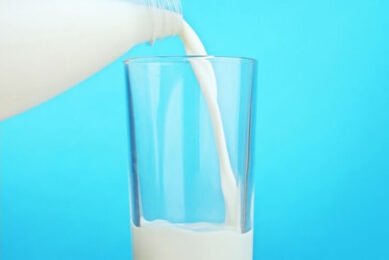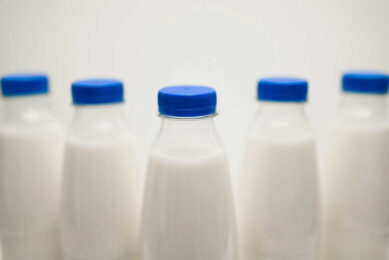Omicron outbreak in China weighing on global dairy prices

The Omicron outbreak in and around Shanghai is weighing on global dairy prices, says Nathan Penny, senior agri economist of Westpac New Zealand. He expects the impact of this development to be a temporary setback.
The Omicron outbreak, particularly in and around Shanghai, affects the largest containerport in the world. About 400 million Chinese are currently under some form of lockdown restrictions. For the dairy sector and other agricultural industries in New Zealand, China is the largest export market. “Unsurprisingly this development matters for both our export demand and our export prices,” Penny says.
Prices have fallen in the latest Global Dairy Trade auction on 19 April, with a 3.6% drop across the board to an average price of US$4,855 per metric tonne (MT). It’s the third consecutive decline after a record peak on 1 March.
OVERVIEW OF GLOBAL DAIRY MARKET PRICES
The biggest drop came from whole milk powder (WMP), which is also the biggest influence on Fonterra’s farmgate milk price. It fell 4.4% to an average of US$4,207 per MT. Skim milk powder dropped 4.2% to an average of US$4,408 per MT. It stayed ahead of WMP in value for a second time.
“This is further clearcut evidence that the outbreak in China is weighing on global dairy prices,” Penny says. Over the last 3 auctions, whole milk powder prices have now fallen nearly 8% on the back of the outbreak. Penny expects the impact of the development to be temporary. “We’ve seen in other countries that Omicron waves eventually pass. Already in China, the authorities have already announced some easing in the lockdown restrictions.”
Westpac is sticking with its farmgate milk price forecast of NZ$9.60 (US$6.34) and NZ$9.25 (US$6.11) per kg milk solids for this season and next season.
Milk production and heifers
According to a new commodity report of ANZ Bank, milk production grew strongly in Australia the last 6 months. Ideal weather conditions for many of Australia’s dairy farms has resulted high pasture growth. But the rebuild of the Australian herd is taking time.
ANZ says that some producers found new income streams in shipping dairy heifers in to China during a long drought in 2019. This has driven up the price of cows. But as a result of the current higher demand for cows, producers are focusing on retaining calves and older cows.
“This is likely to result in a slight drop in yield due to the retention of older cows and first-time heifers producing less milk,” ANZ expects. “The continuing trend of a declining number of dairy farms has also slowed the rebuild.”
Australian Bega Cheese has offered their suppliers a record milk price of 8.40 (US$6.09) a kilogramme for the 2022-2023 season. The company also announced a 10 cents MS step up and price increase for the 2021-22 financial year.
OVERVIEW OF GLOBAL DAIRY MARKET PRICES
“As is always the case when setting milk price, it was important that we considered the returns in both the Australian and international markets, the milk requirements for our significantly expanded portfolio of products and the competitive circumstances in each of our regions,” Bega executive chair, Barry Irvin, says. Bega Cheese hopes to attract new suppliers to the company.
The EU has published proposals that could add intensive dairy farming to the Industrial Emissions Directive (IED). This will result in countries only granting permits to dairy facilities that meet standards, including on waste disposal, and emission limits for gases including sulphur dioxide and nitrogen oxides. The introduction of an environmental licensing system for intensive dairy is edging closer as the EU toughens its rules on industrial pollution.
Production in the US
And in the US, the Agriculture Department has said milk production in the US was below a year ago for the fourth month in a row in February. The Agriculture Department’s preliminary data shows output at 17.5 billion pounds (7.94 million kg), down 1% from February 2021. It follows a 1.7% drop in January.
February cow numbers in the US totalled 9.37 million, up 3,000 from January. This was the first increase in 8 months, but numbers were still down 96,000 from a year ago.
Join 13,000+ subscribers
Subscribe to our newsletter to stay updated about all the need-to-know content in the dairy sector, two times a week.










